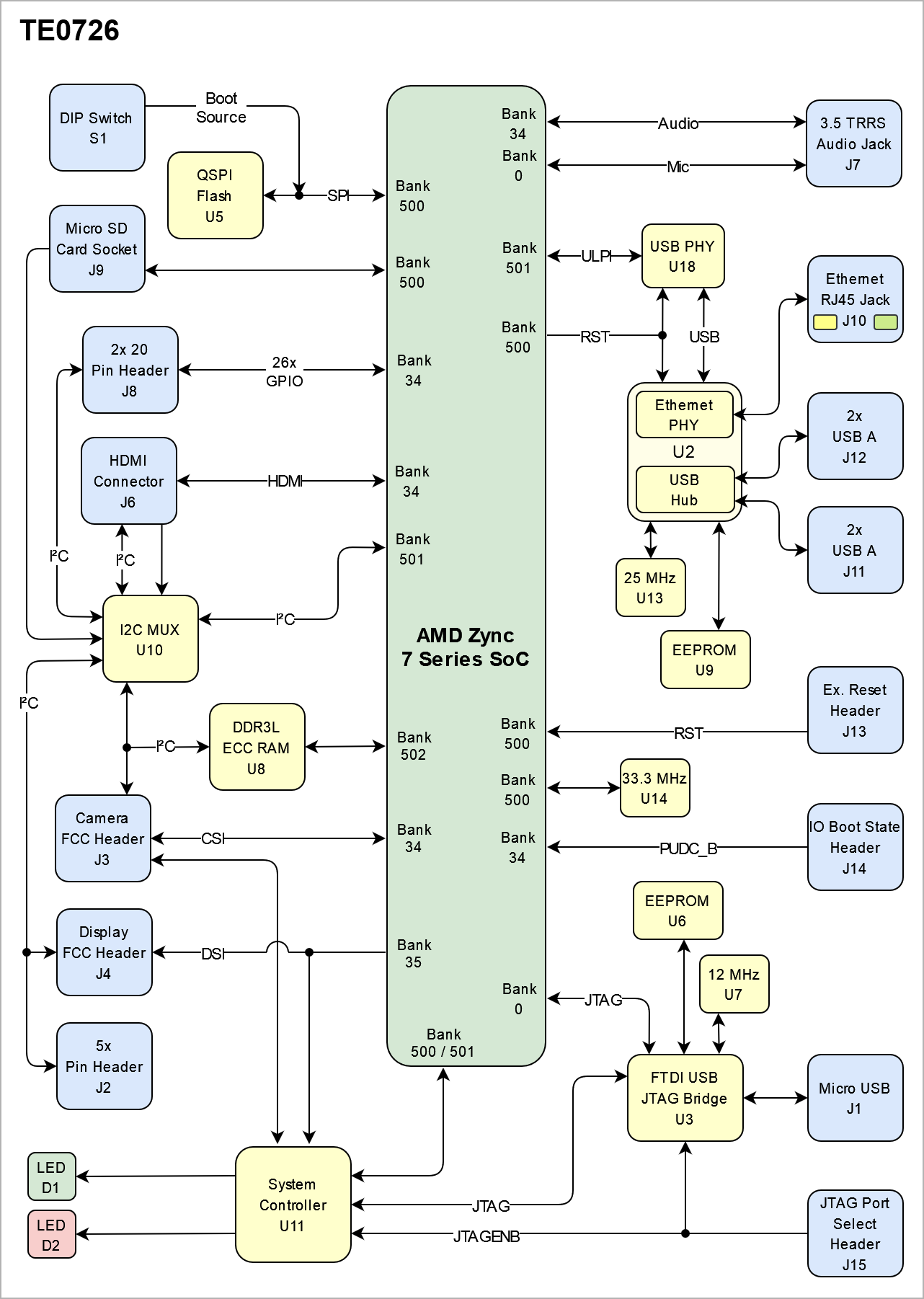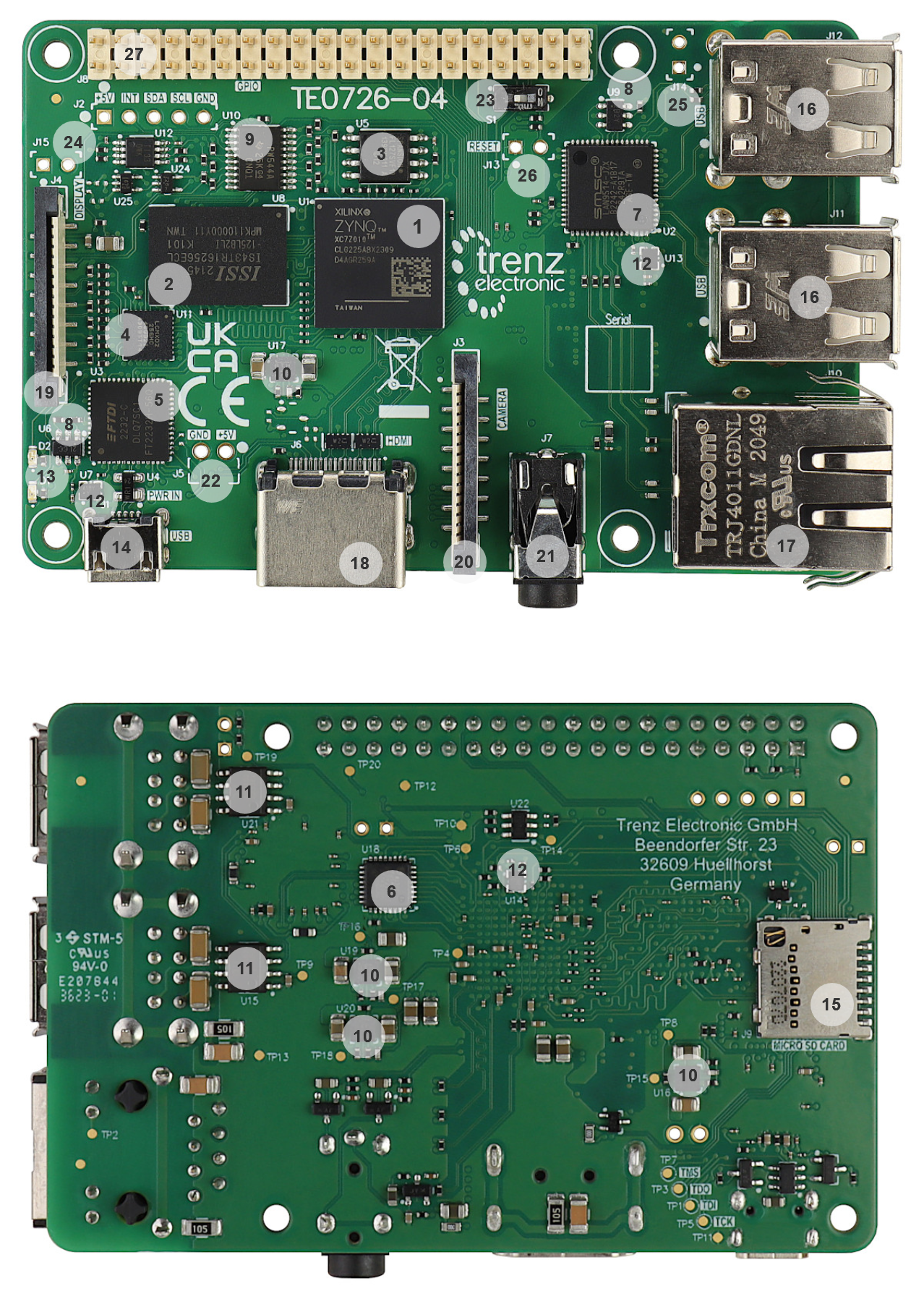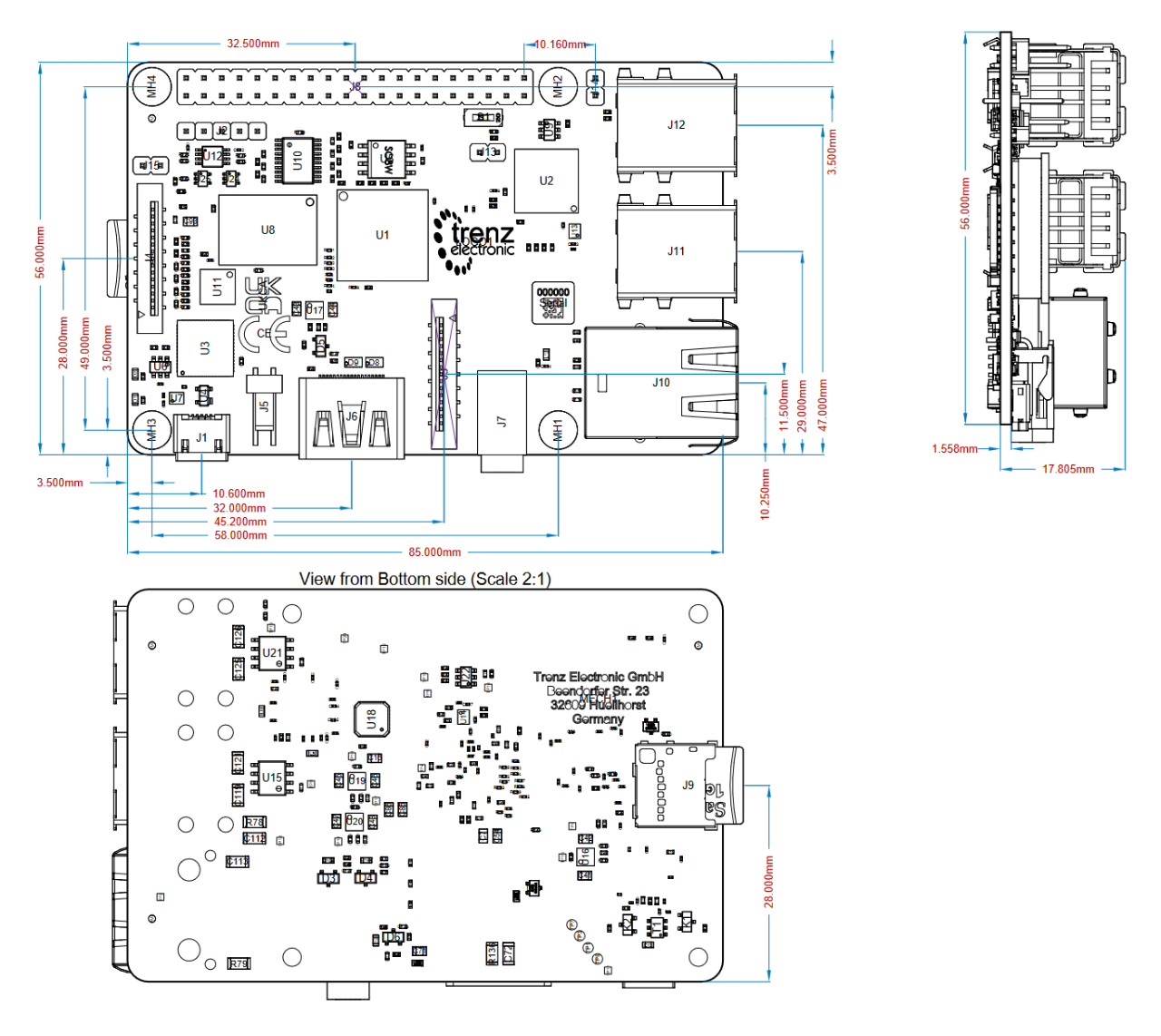
| Date | Revision | Changes | PCN Link | Documentation Link |
|---|
| 2023-06-10 | 04 | Page Numbers refer to the schematic for this revision - EOL components U16, U17 , U19, U20 (EN5311QI) were replaced by MPM3834CGPA
- Added MIC bias power L12, C114 , R151 (Page 16)
- Added Legal notices (Page 1)
- Added power diagram (Page 4)
- Added S1 switch and R152 for "JTAG only mode" enable (Page 8)
- The signals were renamed:
- SPI-DQ0/M0 ---> SPI-DQ0/M3
- SPI-DQ3/M3 ---> SPI-DQ3/M0
- ECC function has been added for U8 (Page 11)
- Added I2C level shifter U12 for DDR3 ECC function (Page 11)
- Added Buffers U24, U25 to match the level of signals (Page 6)
- Added Diode D7, resistors R155, R160
EOL components L1, L2, L3, L4, L6, L7, L9, L10 BKP0603HS121-T replaced by MPZ0603S121HT000 EOL components D8, D9 SP5001-04TTG replaced by EMI8042MUTAG Resistors R80-R82 replaced by 10 kOhm (was 1k43) Added Testpoints TP15 - TP20 The type of testpoints TP1 - TP14 was updated. Diameter changed from 0.8 mm to 1 mm CEC function is not supported. L11 was removed. C127, D5, R140, R42 are DNP Power-up sequencing was updated for new DC-DC supplies Capacitors C29, C32, C33 replaced by 470 nF (was 100 nF)
| PCN-20230619 TE0726-03 to TE0726-04 Hardware Revision Change | TE0726-04 | | 2021-01-21 | 03
| - Change DDR3 RAM (U8) from IM4G16D3FABG-125I to IS43TR16256BL-125KBLI
- Clock Revision Change (U7, U14) from SiT8008AI-... to SiT8008BI-...
- Clock Revision Change (U13) from SiT8008AI-... to SiT8008BI-...
- LEDs D1 and D2 changed to 19-213/G6C-BM1N2/DT and 19-213/R6C-AL1M2VY/3T
- Set S/N to not fitted
| PCN-20210121 TE0726-03 DDR3 Change and Product Update | TE0726-03 | | 2019-04-08 | 03 | - VBUS Resistor R94 replaced by 10 kOhm (was 12k1)
| - | TE0726-03 | | 2016-05-06 | 03 | - Introduced new variants:
- Default with DDR3L 128 Mb
- TE0726-03M with DDR3L 512 Mb
- TE0726-03L with DDR3L 128 Mb,
without usb's, eth_phy, RJ-45, CSI, DSI, HDMI and 3.5mm jack connectors
- Changed FTDI to 56 pins package
- Moved LED's into Raspberry Pi 3 layout
- Replaced POWER connector on right angle connector
- Corected conection PUDC pin
- Replace HDMI, DSI/CSI connector, USB stacked connectors, RJ-45, power connector)
| - | TE0726-03 | | 2016-01-26 | 02 | - CSI CLK line moved to MRCC pin, CSI lanes swap
- CSI camera GPIO moved to MIO GPIO
- RPi GPIO 14,15 moved from MIO to PL
- Added 47 µF capacitor for SD Card VCC (required by SD spec)
- Added 47 µF capacitor for RPi camera - prevent voltage drop at camera init
- Fixed MODE pin strapping
- LED change 0603
- Added POWER connector 2 pin
- Change HDMI ESD to ESD+EMI
- Fixed HDMI HPD and backpower
- DSI find solution for LS mode
- Fixed XADC power caps
- Changed LPDRR2 to DDR3L
| - | TE0726-02 | | - | 01 | | - | - |
|



